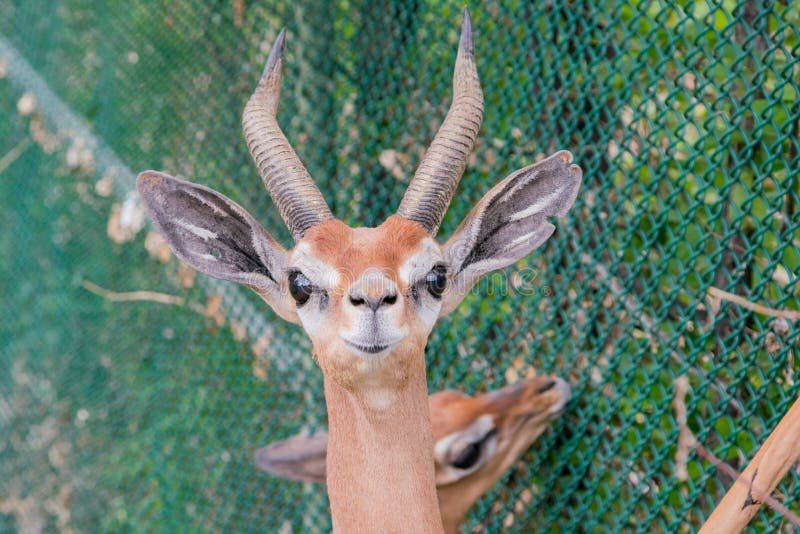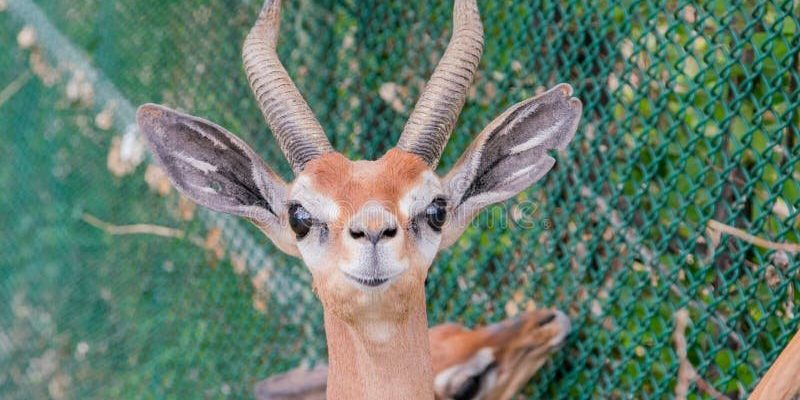
Imagine sitting at a cozy café with a friend and chatting about these fascinating creatures. The gerenuk stands out due to its elegance, but it turns out there are several other animals that could be its distant relatives; some even share similar habitats. Throughout this article, we’ll explore 10 animals that resemble the gerenuk in various ways—from their physical features to their behaviors. By the end, you’ll be the go-to expert on distinguishing these amazing creatures!
1. Thompson’s Gazelle
Thompson’s gazelle, often called “Tommy,” is a small antelope that roams the grasslands of East Africa. These gazelles are similar to gerenuks in size and build. They have slender legs and are known for their impressive speed, capable of running up to 50 mph. Like the gerenuk, they also exhibit a graceful bounding motion.
So, how can you tell a Thompson’s gazelle apart from a gerenuk? For one, Tommy has a more compact body shape and shorter neck. This makes it less agile but perfectly suited for dodging predators. They also have distinct markings—look for the black stripe on their side that the gerenuk lacks. If you’re watching them in a group, the Thompson’s gazelle is the one that seems to dart around in circles, showcasing its speed and nimbleness!
2. Grant’s Gazelle
Grant’s gazelle is another member of the antelope family, primarily found in savannahs and grasslands. They’re larger and heavier than Thompson’s gazelles, and their bodies are somewhat more robust. Just like the gerenuk, Grant’s gazelles also thrive in herds, relying on group dynamics for safety from predators.
To distinguish between the two, look at their horn shapes—Grant’s gazelles have long, curved horns that can stand nearly three feet long! In contrast, gerenuks possess slender horns that are less curved. Additionally, Grant’s gazelles have a more pronounced coloration on their faces, with darker patches compared to the elegant light brown of the gerenuk. If you’re in the savannah, spotting a Grant’s is like coming across a more solid version of the gerenuk.
3. Impala
Impala are another fairly common sight in East and Southern Africa. They are medium-sized antelopes that, like the gerenuk, are known for their ability to leap gracefully across the land. Impalas can jump up to 10 feet high and cover distances of up to 30 feet in a single bound. This makes them incredibly agile and visually quite striking.
The key differences? Impalas have a more pronounced build than gerenuks, with a stronger and stockier frame. Their coloration is similar but tends to be a darker brown with a distinct white underbelly. Plus, impalas have a characteristic “saddle” marking on their backs that sets them apart. If you see a herd leaping through tall grass, chances are they’re not trying to imitate a gerenuk!
4. Waterbuck
Waterbuck are another large antelope species, known for their impressive size and distinctive shaggy coats. They typically inhabit regions near water sources, unlike gerenuks, which are more adapted to dry environments. Waterbuck have a circular white patch on their rumps, an identifiable feature that makes them stand out.
While both waterbucks and gerenuks have long legs, waterbucks are bulkier and have a stocky body shape. Their horns are thicker and spiral, which is a drastic contrast to the slender, straight horns of a gerenuk. Think of waterbuck as the robust cousin of the gerenuk, preferring watery habitats instead of the arid lands that the gerenuk calls home.
5. Saiga Antelope
Saiga antelopes are fascinating creatures native to Central Asia, known for their unique, bulbous noses that help filter dust and regulate temperature. They have a body shape somewhat reminiscent of the gerenuk, with long legs and a graceful stance.
However, saigas have much more pronounced facial features, mainly their large noses that stand out dramatically from their faces. While gerenuks seem like models of elegance, saigas look like they came straight from a futuristic cartoon. It’s like comparing a sleek sports car to a quirky, retro vehicle. Both are impressive in their own right but incredibly different in appearance.
6. Topi
Topis are large antelopes that graze in African savannahs. They might share some similarities in terms of body shape with the gerenuk, but they are sturdier and have a distinctive color pattern. Topis have a reddish-brown body with darker patches, making them visually striking.
What really sets them apart, though, is their horn shape. Topis have long, twisted horns that curve back over their heads—think of a spiral staircase! In contrast, the gerenuk’s horns are much more slender and straight. If you ever find yourself observing a topi, notice how they seem to be on high alert—much like a soldier standing guard, ready to defend their territory.
7. Kudu
Kudu, particularly the greater kudu, are quite majestic with their large, spiraled horns and tall frames. They are more robust when compared to the slender gerenuk but share a similar habitat of open woodlands and savannahs. The kudu’s striking features include bold white stripes on their sides, which help them camouflage in their surroundings.
If you want to differentiate them from a gerenuk, look out for their size; kudus stand much taller and have a bulkier physique. Additionally, their long, spiral horns are a crucial identifier, as gerenuks possess much smaller and less twisted horns. Kudu are like the gentle giants of the antelope world, while gerenuks are more like elegant ballet dancers, gracefully moving through their environment.
8. Nyala
Nyala are another interesting species that thrive in Southern Africa. These antelopes are sexually dimorphic, meaning males and females look quite different. Males have shaggy brown coats with white stripes and spiral horns, while females are smaller and lighter in color, resembling the gerenuk more closely.
However, while they may seem similar in body size and shape, males have a more robust build and striking coloration that contrasts with the slender elegance of the gerenuk. If you ever see a nyala, pay attention to how their horns jut up from the top of their heads—so different from the gerenuk’s. They are like the wildly dressed party guests compared to the suavely dressed gerenuks.
9. Sitatunga
Sitatunga are unique among antelopes due to their adaptation to swampy habitats. They have long, splayed hooves that allow them to navigate marshy terrain easily. Similar to the gerenuk, sitatungas have long, slender bodies, but their adaptations allow them to live in a completely different environment.
If you’re trying to tell them apart, look for their shaggy fur, which is much more water-resistant than the sleek coat of the gerenuk. Additionally, male sitatungas have long, twisted horns that are significantly thicker than the gerenuk’s horns. It’s like comparing a swimmer to a dancer—both are graceful in their own ways but thrive in different environments.
10. Bongo
Last on our list is the bongo, another striking antelope species known for its reddish-brown coat and white stripes. Bongo are larger than gerenuks and have long, curved horns. They prefer thick forests, unlike the open plains that gerenuks typically inhabit.
To differentiate a bongo from a gerenuk, notice how the bongo’s build is much sturdier. Their horns are also quite impressive, spiraling high above their heads, while the gerenuk’s horns are slender. Bongos are like the heavyweight champions of the antelope world, while gerenuks are the light-footed dancers, making their way gracefully across the plains.
In conclusion, while the gerenuk is truly a unique creature, there’s an array of animals out there that share similar traits or characteristics. By understanding these distinctions, you can appreciate the diversity of the animal kingdom even more! Whether observing them in the wild or reading about them, take a moment to appreciate their unique adaptations and roles in their ecosystems.

